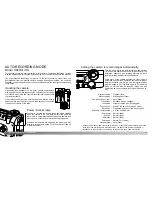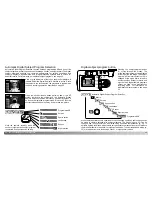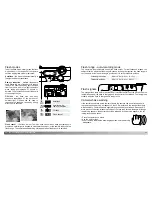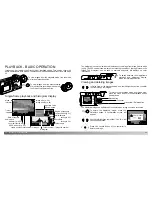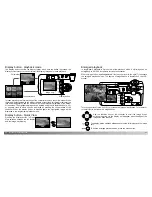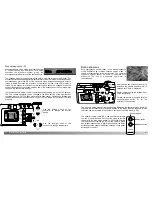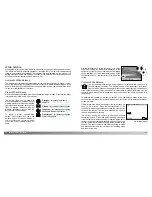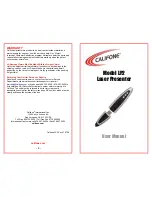
Changing image size affects the number of pixels in
each image. The greater the image size, the larger
the file size. Choose image size based on the final
use of the image - smaller images will be more
suitable for web sites whereas larger sizes will
produce higher quality prints.
46
47
A
UTO
-
RECORDING MODE
-
ADVANCED OPERATION
LCD monitor
2272
1600
1280
640
Number of pixels
(hor. X vert.)
2272 X 1764
1600 X 1200
1280 X 960
640 X 480
Image size and image quality
TIFF
Fine
Standard
Economy
1
2
3
14
7
14
22
69
14
27
39
100
27
47
69
150
Approximate number of images that can be stored on a 16MB memory card.
Quality
Size
2272 X 1764 1600 X 1200
1280 X 960
640 X 480
TIFF
Fine
Standard
Economy
12.0MB
5.8MB
3.7MB
950KB
2.0MB
1.0MB
650KB
210KB
1.0MB
550KB
350KB
130KB
550KB
300KB
200KB
90KB
Approximate file sizes.
Image quality controls the rate of compression, but has no effect on the number of pixels
in the image. The higher the image quality, the lower the rate of compression and the
larger the file sizes. If economical use of the memory card is important, use the economy
mode. Standard image quality is sufficient for normal usage. The TIFF mode will produce
the highest quality image and the largest image files. A status bar is displayed when large
images are saved.
File formats vary with the image quality setting. TIFF images are saved as a TIFF file.
The fine, standard, and economy settings are formatted as a JPEG file. TIFF, fine,
standard, and economy files can be recorded as color or monochrome images (p. 70) in
the multi-function recording mode.
Image size and quality must be set before the picture is taken. Changes are displayed
on the LCD monitor. Image size and quality must be reset manually. See navigating the
auto-recording mode menu section on page 44. In multi-function recording mode, image
size and quality are controlled in the basic section of the multi-function recording menu
(p. 56).
Economy - the smallest file sizes. (JPEG)
A high-quality TIFF image.
Fine - high-quality JPEG image.
Standard - the default setting. (JPEG)
The frame counter indicates the approximate number of images that can be stored on the mem-
ory card at the camera’s image quality and size settings. If the settings are changed, the frame
counter adjusts accordingly. Because the counter uses approximate file sizes, the actual image
taken may not change the counter or may decrease it by more than one. When the frame counter
displays zero, it indicates no more images at the image size and quality settings can be captured.
Changing those settings may allow more images to be saved to the card.
Camera Notes
ECON.
If image size or quality are changed, the frame counter will display the approximate
number of images that can be recorded at that setting on the installed memory card. One
memory card can contain images with differing sizes and qualities. The number of
images that can be stored on a memory card is determined by the size of the card and
the file size of the images. The actual file size is determined by the scene; some subjects
can be compressed further than others.
FINE
STD.
TIFF
Summary of Contents for DiMAGE F200
Page 1: ...INSTRUCTION MANUAL E...



